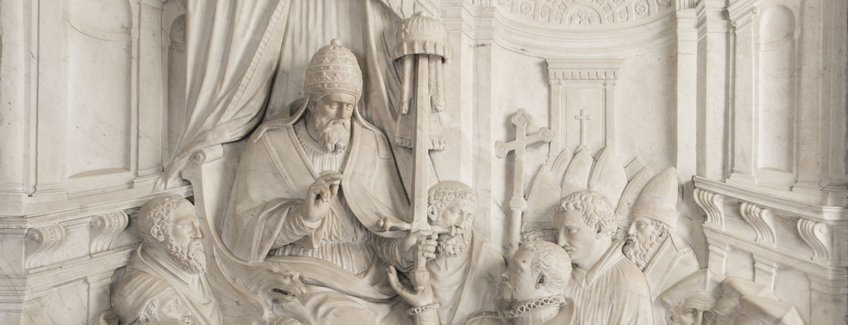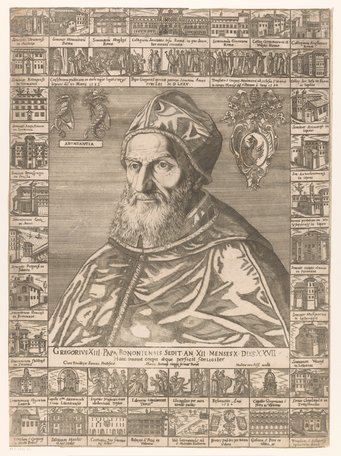
Gregory XIII and the Foreign Communities in Rome

No pontiff was as systematically committed to foreigners living in Rome in the early modern age as Gregory XIII Boncompagni (papacy 1572–1585). They played an important role in the realization of the ambitious project of giving life to a universal church according to the dictates of the Council of Trent. The pope instituted a number of new seminaries for the training of young priests from the northern European countries affected by the Protestant reform, but also for those coming from the Middle East, a borderland inhabited by Catholics, Orthodox and Muslims. Some of the Gregorian foundations were the English and Germanic-Hungarian colleges, those of the Maronites, the Greeks, the Neophytes and the Armenians, as well as the Collegio Romano. At the same time, the pontiff also supported many other foreign and Italian communities, such as the confraternities of the Sienese, Brescians and Bolognese, and the national churches of Santa Maria dell’Anima, San Giacomo degli Spagnoli and San Luigi dei Francesi.
If Gregory XIII's target was to assimilate the 'national' traits of the city's foreign institutions in favor of a more universalistic character, he did not impose standardized solutions on them. This research project analyzes the specific strategies developed by the pope for the individual national communities aimed at creating a balance between the introduction of new precepts and the preservation of local customs. The investigations will also treat his trusted associates, in particular the cardinal protectors of the various nations. Gabriele Paleotti, Giulio Antonio Santori, Antonio Carafa, and Guglielmo Sirleto, to name just a few, were key figures in the implementation of the vast Gregorian political and theological programme, moving as they did between the religious institutes, foreign embassies, and the Curia. An important aspect for analysis will concern their roles in the architectural projects and the artistic decoration of churches, colleges and hospices, important points of reference for the foreign communities in the Urbe.
Publications
Susanne Kubersky-Piredda, "Roma communis patria. Comunità straniere nella Roma di Gregorio XIII", Römisches Jahrbuch der Bibliotheca Hertziana, 42 (2015/2016) [2018], pp. 383–386.
Camilla S. Fiore, "Gregorio XIII e i greci di S. Atanasio a Roma tra fine Cinque e inizio Seicento", Römisches Jahrbuch der Bibliotheca Hertziana, 42 (2015/2016) [2018], pp. 387–436.
Giulia Iseppi, "Costruire l'identità fra chiesa e nazione. Il caso dei Bolognesi a Roma (XVI–XVII secolo)", Römisches Jahrbuch der Bibliotheca Hertziana, 42 (2015/2016) [2018], pp. 437–481.
Susanne Kubersky-Piredda, "Chiese nazionali fra rappresentanza politica e riforma cattolica: Spagna, Francia e Impero a fine Cinquecento", in Identità e rappresentazione. Le chiese nazionali a Roma, 1450-1650, ed. by Alexander Koller and Susanne Kubersky-Piredda with the collaboration of Tobias Daniels, Campisano Editore, Rome 2016, pp. 17–64.
Camilla Fiore and Susanne Kubersky-Piredda, "Gregorio XIII e l'Oriente. Arte e identità nei Collegi greco, maronita e armeno", in Gregorio XIII. Arte dei moderni ed immagini venerabili della nuova 'Ecclesia', ed. Valentina Balzarotti and Bianca Hermanin, Rome 2021, pp. 137–157.
